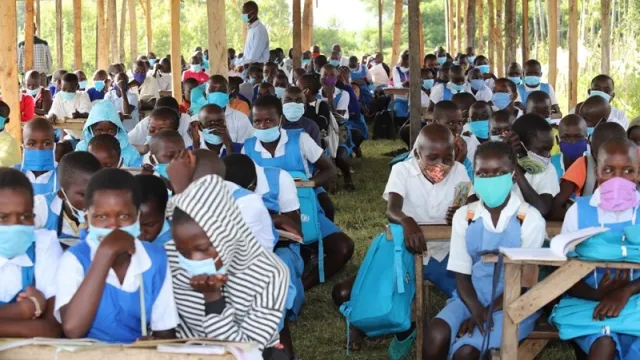The World Bank lauds Kenya's education sector gains

The World Bank lauds Kenya's education sector gains
A report by the World Bank has ranked Kenya among the top performers in education in the region, having made impressive efforts in the sector even as it continues to recover from the adverse effects of Covid-19.
Kenya provides education services for over 16 million children and youth, with almost 500,000 teachers distributed in close to 90,000 pre-primary, primary, and secondary school institutions.
Currently, the education system is expanding to accommodate more students, especially in pre-school and post-primary education.
The report further shows that the system has expanded significantly with education spending matching with increased enrollments.
The country has therefore embarked on ambitious reforms aimed at improving quality of education, including the implementation of a Competency Based Curriculum, (CBC) which also faced a significant disruption during the pandemic, reforming teacher professional development, textbook policy and improving management practices at the local level.
However, there are still challenges remaining in the sector including increasing the enrollment in post-primary education, improving learning outcomes and reducing deep inequalities.
According to the data by the Ministry of Education, enrollment in primary school is almost universal but falls sharply when transitioning to secondary education.
Fourteen percent of the students who complete Grade 8 of primary education do not enroll in Form One in secondary and about 40 percent of students who begin Grade One, do not complete Form 4 (Grade 12).
Similarly a sharp drop is observed in promotion rates between Grades 7 and 8 and between Form 3 and 4 coincide with the national examinations, which determine progress from primary to secondary and from secondary to upper education levels in many Sub-Saharan Africa countries.
The COVID-19 pandemic has resulted in learning losses and deepened inequalities in the education sector with around 17 million students and more than 320,000 teachers getting affected by the closure of 30,000 primary and secondary schools in 2020.
Read also: World Bank sees Kenya’s growth easing to 5.5 percent as fuel bill drags recovery
Also, efforts to provide remote learning revealed a significant digital divide, with over 50 percent of students not being able to engage in remote learning opportunities mainly due to lack of devices, electricity and internet connectivity.
The government now faces the challenge of ensuring that the pandemic does not leave lasting scars through its education effects, and tackling the remaining medium-term challenges.
Key structural challenges include increasing enrollment in post-primary education, improving learning outcomes, and reducing deep inequalities.
However, with continued efforts, Kenya can build on the strong foundations of its education system by continuing to improve access to and the quality of education, equipping it to be a driver of growth towards becoming an upper-middle-income country and reducing inequalities.
While Kenya does well for its level of income, this does not mean that Kenya should not aim to further improve both access and, especially, quality of education in order to improve the Learning Adjusted Years of Education (LAYS) and the World Bank’s Human Capital Index (HCI), which aims to measure the level of development of human capital in a country.



